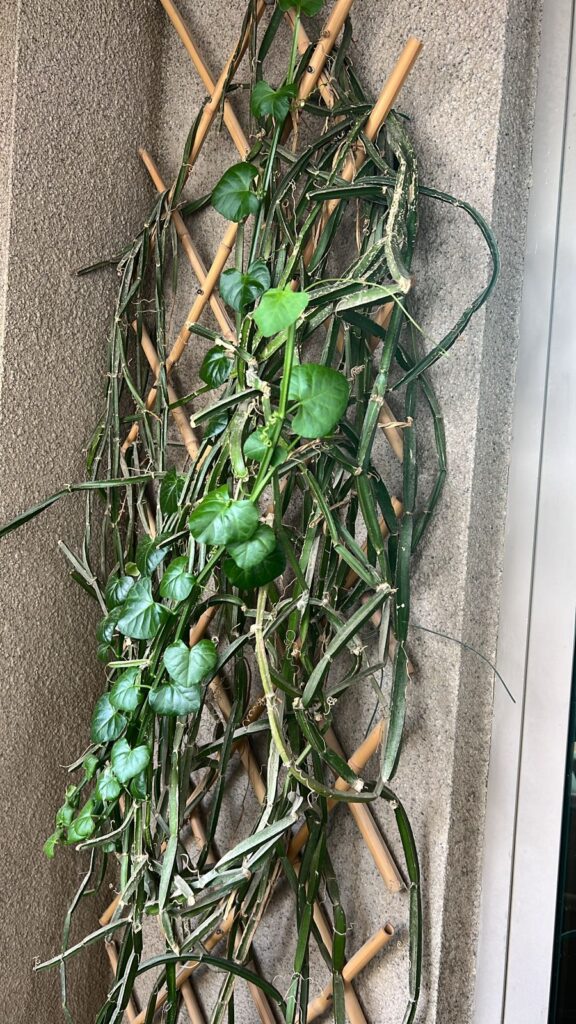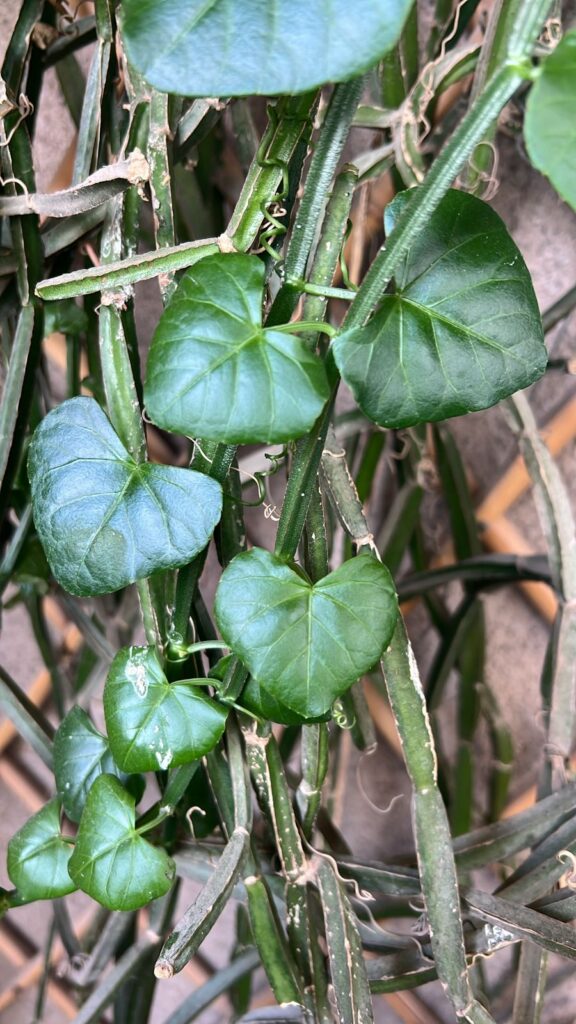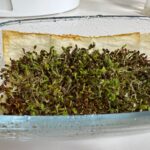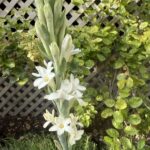We generally tend to forget that most modern medicine has its roots in our backyards with many plants having great medicinal properties. A lot of that traditional knowledge has been lost, but some linger on in our customs and grandma’s tales.
The Veldt creeper aka Pirandai is one such marvel which is a staple in many South Indian gardens. It is drought resistant succulent, easy to grow and so very important to add to our regular diet. It can grow indoors as well as outdoors but does best in partial shade with dappled sunlight. It is extremely sensitive to overwatering so be watchful for that. A high-phosphorous fertilizer is helpful for this plant but giving it organic home compost or leaf compost is best. It is not too fussy about the soil except that it should be well-draining soil and in Feng shui, it is best placed in the south corner of your garden.
The flowers are whitish and almost insignificant and it has red berry-like fruits. The propagation is done by seeds and stem cuttings. One node is quite enough and roots easily. Just dip in rooting hormone and plant in well-draining soil. You can add gravel as well as perlite to your soil and plant in that.
Pirandai needs to be repotted every year for the first four years and every 2 years thereafter. Water only once every week. Please check every couple of months and remove dead diseased leaves.
Pirandai when consumed as a vegetable or a chutney helps to make strong bones as it is high in calcium as well as phosphorous. It is also known as Hathjod in North India as it helps knit broken bones and is used extensively in Ayurveda.
Leaf miners, leaf beetles, and caterpillars are common pests that attack them so check for these and treat them accordingly.
It helps in managing weight by improving the metabolism of the body. It also prevents fats and lipid accumulation in the body and lowers the level of triglycerides which further helps in managing obesity.
Hadjod/ Pirandai helps in wound healing due to its astringent and wound-healing properties. Applying Hadjod paste on the wound helps in reducing pain and inflammation due to its analgesic and anti-inflammatory properties. But these must be used with caution and only under the supervision of an Ayurvedic practitioner.

Photo Credit: Sandhya Santhanakrishna – Pirandai
Recipies:
Pirandai Chutney: (please consume only twice a week)
Choose young light green and not too fat Pirandai – wash well and remove the nodes – next remove the skin and the fiber on the raised ridges – can wear gloves – smearing your hand with oil helps – cut into small pieces like a drumstick and use a small amount of sesame oil and fry really well till the color changes and keep aside.
This is the first step and is crucial.
For a cup of Pirandai you need these other ingredients :
Urad dal -1 cup
Garlic -4 small cloves
Ginger – an inch
Red chilli -4-5
Coconut shavings -1/2 cup
Curry leaf – 2 sprigs
Asafoetida -1 pinch
Use a bit ( 1 pinch ) of oil and one by one put these in tava and fry well. Cool and transfer to the Mixie
Use Tamarind – 1 /2 small lemon size
Grind it all together – if needed add some water and salt as needed.
South Indians often mix with rice and ghee and consume. You can make sandwiches with this as well.
You can also fry Pirandai pieces and add them instead of drumsticks in Sambar.







One Response
Greetings from Carolina! I’m bored at work so I decided to check out your website on my iphone during lunch break. I love the info you present here and can’t wait to take a look when I get home. I’m surprised at how fast your blog loaded on my cell phone .. I’m not even using WIFI, just 3G .. Anyhow, awesome site!